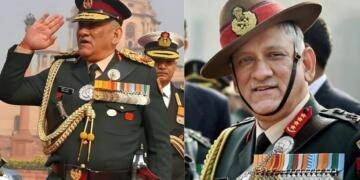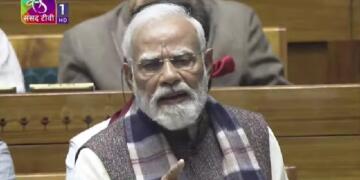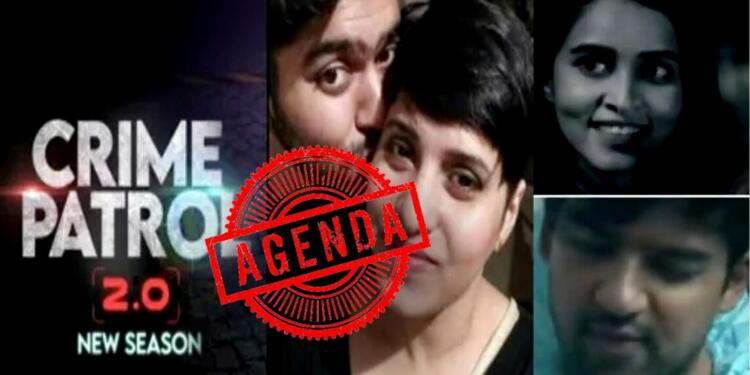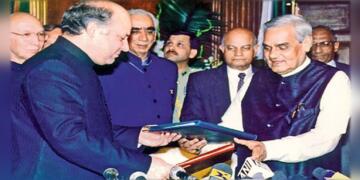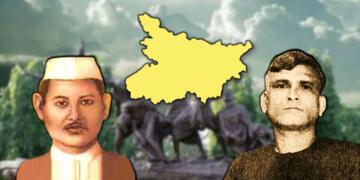Since the advent of Muslim rule, India has been facing anti-Hindu activities. Till independence these propagandas were harmful but not as toxic as it got post-independence. Just for vote bank, some politician started to do appeasement politics that grew like cancer with growing time. But now, with technology in hand, people have started to sense the anti-Hindu propaganda and started to revolt back against it. But the story does not seem to be ending any time soon. With time, there has been even greater shift toward anti-Hindu propaganda that is more sharp but subtle.
Aftab became Mihir
Recently, SonyTV’s famous crime anthology show Crime Patrol 2.0 televised an episode on the recent murder case of Shraddha Walker. The show faced immense criticism and has now been deleted. It was done so because of hurting the Hindu sentiments. The facts were distorted by naming Aftab as Mihir, a Hindu boy while Shraddha was named Anna Fernandis, a Christian girl. The episode shows them marrying in a temple with Hindu tradition while Aftab’s mother is projected as a pious woman who ties ’calava’ on her son’s hand to keep him calm.
This type of picturisation is not a mistake. Instead, it was a calculated move to change the discourse and propagate anti-Hindu narrative. The case proved to be an eyeopener for people in the society. Right now, there is a general consensus about the religious angle in the murder and people have started taking ‘love jihad’ seriously. The show was broadcasted to shift the mindset of people from rising barbaric love jihad acts to anti-Hindu sentiments. However, it failed to do so. But, although the episode was taken off air, the narrative is still floating around.
The long history of such nuisance
Though this development is disappointing, it is not the first time something like this has happened. Questioning about the most impactful institutions in the minds of Indians, the answer list tops with Bollywood and Media. Bollywood, ever since its inception, has been a prime stage of anti-Hindu propagandas. Mostly dominated by left-liberals, Bollywood has always tried to demean Hindu tradition and culture.
The ‘pujaris’ in movies are always portrayed as greedy and incompetent while the ‘fakirs’ of dargah and ‘fathers’ of churches are projected as the good people who are always ready to serve the society. The villains of Bollywood generally have ‘Tilak’ on their forehead, which is actually a very pious symbol in Hinduism. In fact, the villains of Indian cinema are often a people with Hindu religious tilt.
For an example, the 1992 film Shola aur Shabnam’s villain (Gulshan Grover) is seen worshiping when the Police reaches to arrest him. In the very next scene, he takes a revolver out of his shawl gunning the officers down while still worshipping. Similarly, few criminals are filmed worshiping Hindu gods before going for a kill. As you know, this has obviously never been practised under Hinduism. But, through cinema, these people have left no stone unturned to paint the religion as demonic.
Defaming Hindus while praising others
Defaming Hinduism is only one side of the coin. On the other side, Muslims are always picturised as victims. While there are movies that use a particular Muslim title to narrate that Muslims are not the terrorist, there are some movies that picturise Hindus as terrorists like “Shaka” in the movie Diljale and “Raghu, Shiva and Kishan” in Baazi. The later movie’s terrorist names are actually the names of the most worshiped gods in Hinduism.
Similarly, media has also used its resources to propagate anti-Hindu sentiments. Whether it is the 2002 riot of Gujarat or the Exodus of Kashmiri Pandits from the Kashmir valley, the media always failed the Hindus. The anti-Hindu sentiments created during 2002 riots undermined the news of Hindus killed. They accused the then chief minister Narendra Modi for the killings of Muslims as if only Muslims were killed. The persecution of Kashmiri pandits too was covered up as if it never happened. Some journalist even justified that heinous crime. A large Hindu majority lived like a refugee for a long time, but that was never portrayed as an exodus.
All of this happened because the voice against Hinduism defamation was never channelised. What happened in one part of the country remained there. People used to get information only from the media and television. So, their narrative for any incident was based on news reports. And, if the news provider media was busy in creating a propaganda, how exactly would the people have united against those propagandas?
Internet channelised Hindus
There was a time when they implanted the cock and bull story of Jodha- Akbar in the minds of Bollywood goers by presenting it as the most pious love story of Mughal era. But the matter of the fact is that, there happened to be no character called Jodha ever in history. Same was in the case with Salim-Anarkali love story.
But things have changed since the inception of the internet age. As of now, people don’t really wait for media to manifest any development. The social threads are now densely connected as a web and this interconnection is now posing a challenge to the propaganda-based media.
The media paid attention to the cases of Pehloo Khan and Tabrez Ansari but mostly ignored the killings of Gopal, who was killed protecting cows from being smuggled. Similarly, Dhruv Tyagi was killed by a man named Mohammad Alam for protesting against his sister’s harassment. But this was never discussed on priority basis by the media. However, now these propagandas are discussed simultaneously on different social media platforms.
Bollywood on the other hand saw recent boycotts for their foul play against the Hindu community. Whether it is Padmavat or Lal Singh Chaddha, people are now seeing true intentions behind the picturisation. Movies like “PK” and “Oh My God!” were criticised for their mockery of Hindu traditions.
Internet has enhanced the ease of people to access information and present their views. Now, with every movie and news, there comes vibrant views from across the nation. This creates a possibility for alternate idea to propagate. But, most of the time, the hidden agenda is revealed easily.
New challenges for Hindus
Ideologically, the left is contrary to liberal tradition. There is a long history of their ideological warfare that stretched for almost five decades with its impact sensed even today. But, in India, the two aligned because of a common notion of hate in them. The hate for Hindus.
Now with the vigilance of internet, it has become hard for left-liberals to implant anti-Hindu propaganda easily. But they have not stopped yet. Now, these types of nuisances are willingly created so as to provide them with publicity as well as an opportunity to instil hatred against Hindus. If the content goes unnoticed, the move to impact the mindset of people becomes successful. However, if it gets noticed, they gain publicity and their idea gets propagated without any medium. The crucial question that arises here is how to face this new challenge?
The answer to this question lies in the concept of Italian Marxist thinker, Antonio Gramsci. He propounded the concept of “Cultural Hegemony.” Analysing the failure of Marxist ideology on its predictions, he opined that, in order to rule the people, the dominant intellectuals use the civil societies such as media to spread their ideology. This is done in such a way that their ideology becomes a common sense.
So, in order to fight this anti-Hindu propaganda, it is necessary for Hindus to get more acquainted with their culture and religion. Apart from that, Hindus should also scrutinize any content for any anti-Hindu propaganda. It is also necessary for them to strengthen the bonds among each other instead of fighting on the basis of caste. The acknowledgement of the rich Hindu traditions and taking pride while doing so will eventually erode any possibility of anti-Hindu propaganda.
Support TFI:
Support us to strengthen the ‘Right’ ideology of cultural nationalism by purchasing the best quality garments from TFI-STORE.COM



